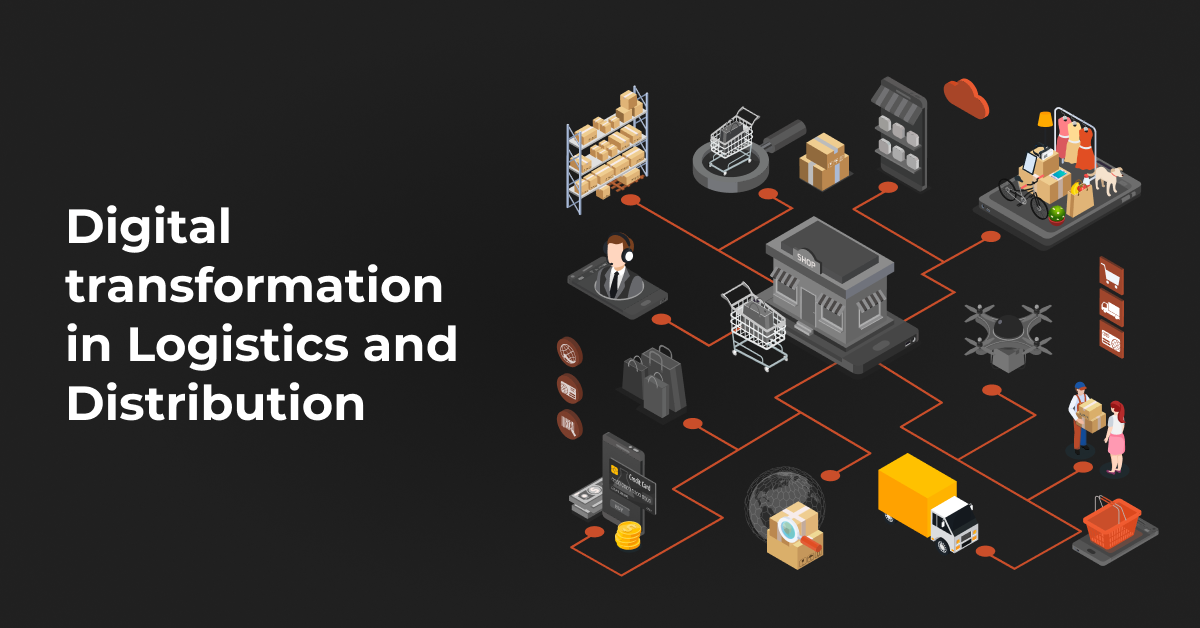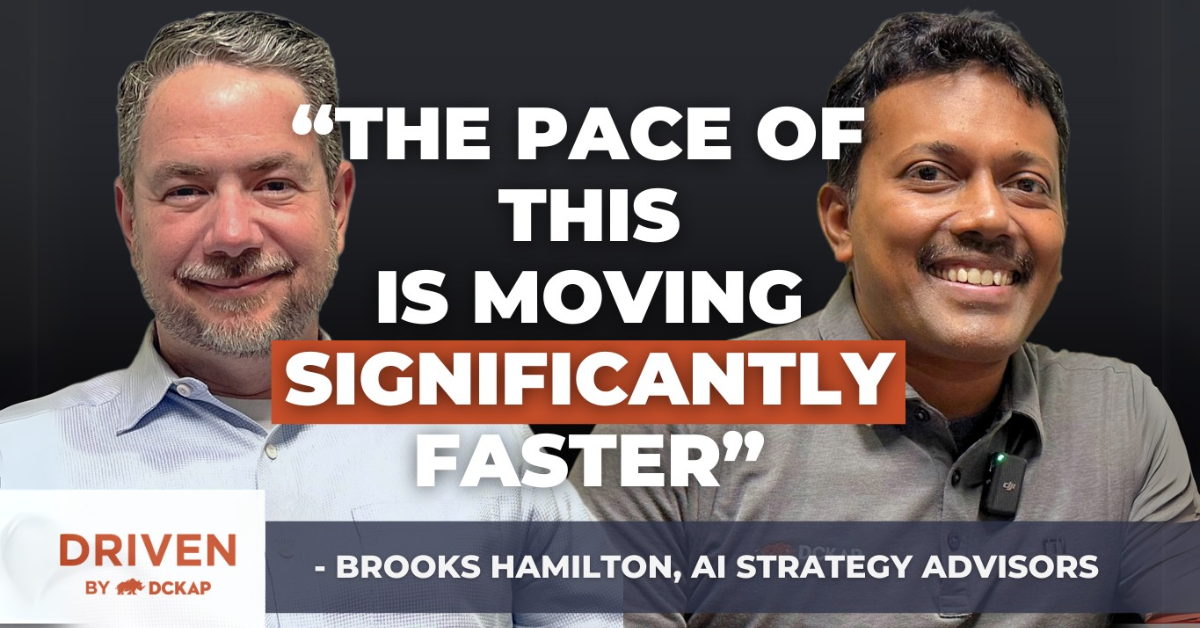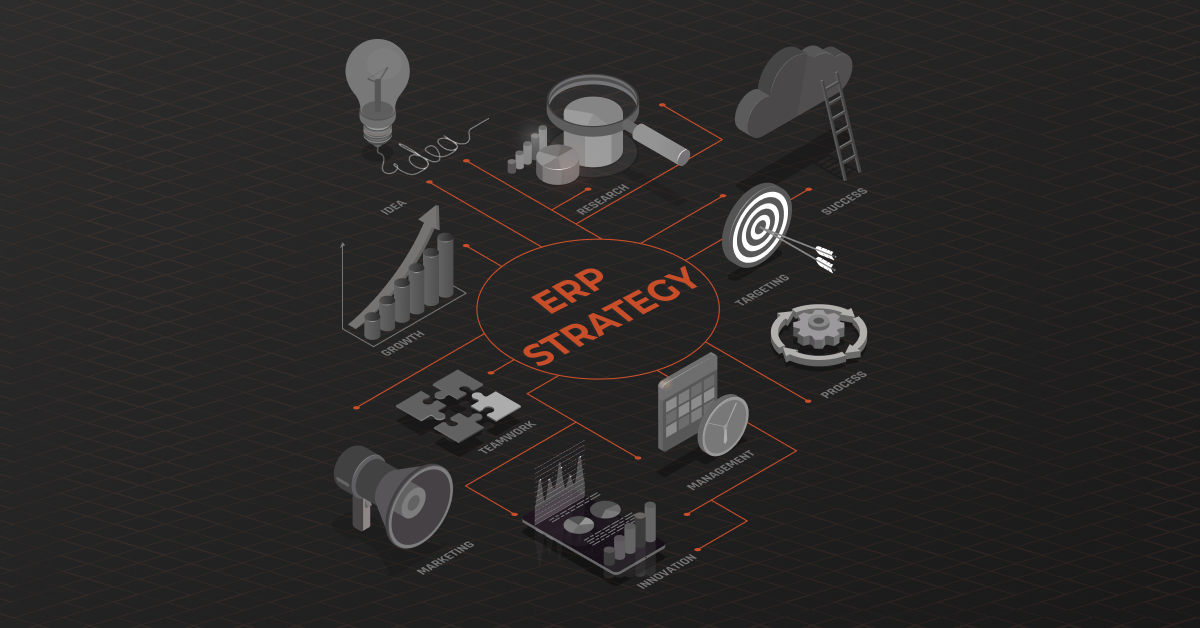Digital transformation happens when a business switches to using digital technology in all parts of its operations. This means changing how they talk to customers, do tasks, and deliver products. It’s a big change that completely alters how the industry works.
Digital Transformation in Logistics and Distribution has become really important because it enhances the overall efficiency. Technology has made operations faster, leaner, and more efficient. And with automation services, these changes are happening even quicker than before.
How Digital Transformation is Changing the Logistics Industry
Digital transformation isn’t just one big change. It involves four types of changes:
Business Process Transformation or digital transformation includes key technologies like blockchain, IoT, AI & ML, and supply chains that streamline common tasks and reinvent business processes. This helps logistics companies innovate faster, make better decisions, engage customers, and increase automation.
- Digital Twin: Digital twins simulate the operation of a supply chain, including all its complexities, using advanced analytics and AI. This helps in better understanding and managing supply chain vulnerabilities and risks.
- Blockchain: Blockchain integrates different aspects of business into a single platform, improving logistics operations and enhancing transparency.
- AI & ML: Artificial intelligence and machine learning address governance issues and data silos in supply chains, improving visibility and integration across stakeholders.
- Big Data and Analytics: The use of Big Data analytics helps to figure out predictive analytics on demand changes and manage inventory shortages more effectively, reducing costs and increasing competitive edge.
Some of the other ways digital transformation is impacting the distribution industry:
IoT-Integrated Supply Chain: Internet-connected devices, known as the Internet of Things (IoT), are transforming supply chain management. They help with fleet tracking and management, last-mile delivery, demand assessment, predictive maintenance, and real-time inventory tracking.
Behaviour Analytics & Customer-Centricity: By analyzing customer behavior across different platforms, businesses can gain insights into the entire customer journey. This helps in understanding customer needs and preferences better.
Benefits of Digital Transformation in Logistics and Distribution:
Boosted Productivity
- Many logistics management companies now use digital technologies like cloud computing software to automate their supply chains, streamlining their operations.
- Centralizing activities on a single technological platform ensures consistent and high-quality service to customers.
Enhanced Collaboration with Trading Partners
- Adoption of blockchain-enabled digital shipping solutions by shipping organizations enhances data security and trust among trade partners.
- Clients can track their purchases from start to finish, improving transparency and customer satisfaction.
- Access to real-time information for all participants reduces bottlenecks and builds trust in the shipping process.
Improved Routing Efficiency
- Investments in digital technologies have led to better routing strategies in the logistics industry.
- Advanced routing software helps drivers avoid delays due to traffic congestion or unexpected roadblocks, saving time and fuel costs.
- Efficient routing results in shorter distances traveled and reduced fuel consumption, leading to cost savings for logistics service providers.
Enhanced Fleet Maintenance
- Digital technology enables logistics businesses to perform preventative maintenance on their vehicles.
- Remote diagnostics solutions allow companies to monitor their fleets and identify maintenance needs in advance, reducing vehicle downtime and costs.
- Customers can rely on logistics companies to deliver on time, knowing that vehicles are well-maintained and reliable.
Logistics Intelligence
- Digital transformation has led to an increase in data in the logistics sector.
- Investment in advanced data analytics and business intelligence tools helps companies make informed decisions and optimize operations.
- Cognitive computing and AI-enabled technologies contribute to better customer experience and reduce costs through intelligent decision-making.
Top Challenges and Solutions in the Distribution and Logistics Industry
The logistics industry is changing fast, facing main challenges like agility, visibility, and sustainability. With digital transformation becoming crucial, logistics firms need to adapt. Here’s why:
1. Siloed operations
Challenge: Different teams in different locations using different systems lead to scattered information and inefficiency.
Solution: Opt for a modern integration solution like DCKAP Integrator, that is budget-friendly and efficient. It is an iPaaS specifically designed for distributors that centralizes accurate data, breaking down silos and automating operations. It helps streamline collaboration and optimize logistics operations.
2. Data management and security
Challenge: Logistics companies deal with massive amounts of data, making storage and access a challenge.
Solution: Modern data integration solutions manage and connect fragmented data from various sources creating a single source of truth, providing real-time insights.
3. Lack of process automation
Challenge: Manual logistics operations are time-consuming and error-prone.
Solution: AI-powered automation software automates tasks and workflows, reducing errors and saving time. It also streamlines document processing, like invoice automation, improving efficiency significantly.
4. Dependency on legacy systems
Challenge: Legacy systems slow down operations and hinder scalability.
Solution: Efficient integration solutions seamlessly integrate with existing IT ecosystems, offering enhanced security, flexibility, and efficiency. Upgrading legacy systems empowers logistics companies to leverage new technologies effectively.
5. Skilled labor shortages
Challenge: Logistics faces a talent shortage, requiring software to handle tasks and engage employees.
Solution: Intuitive and easy-to-use integration solutions empower employees, improving engagement and retention. Embracing modern technology attracts and retains top talent, ensuring smooth and efficient operations.
Popular Case Studies
Here are two examples where DHL Supply Chain and IKEA demonstrate how digital changes are making a big difference in both B2B and B2C sectors.
1. DHL Supply Chain
DHL Supply Chain, renowned for its end-to-end logistics solutions, had been serving the company’s internal teams in France, Germany, and the Nordics for several years. Let’s see what made them embrace digital transformation and how.
Challenge
In the wake of the COVID-19 pandemic, DHL suppl, faced the challenge of adapting to a dispersed workforce model. With a global workforce of around 56,000 employees, approximately 40% were expected to continue working remotely post-pandemic. The company aimed to minimize IT downtime and frustration among remote workers, especially for mission-critical and customer-facing employees, to maintain business continuity and efficiently serve its customers.
How They Did It
- User-Friendly Online Portal: DHL Supply Chain facilitated a seamless process by introducing a user-friendly online portal. This platform allowed both employees and managers to effortlessly place orders for necessary IT equipment, ranging from laptops to mobiles and tablets. Orders submitted before midday were guaranteed delivery by the very next morning*, eliminating downtime.
- End-to-End Deployment and Refreshing: DHL orchestrated a comprehensive solution covering every aspect of IT equipment deployment and refreshing. This encompassed the entire lifecycle, from initial ordering to delivery and eventual return. Employees could easily initiate the process through the intuitive online portal whenever equipment required replacement or updates.
- Circular Supply Chain Solution: DHL implemented a holistic circular supply chain solution for equipment turnover. This involved thorough technical assessments, repair services if needed, and refurbishment to prepare devices for reuse by other team members or for resale. To ensure environmental responsibility, end-of-life hardware management ensured proper recycling of components.
- Inventory Visibility and Control: Leveraging their proprietary IT platform, DHL SELECT, the company offered robust inventory visibility and control. This sophisticated system empowered the IT department to monitor the whereabouts and status of all assets with utmost precision while upholding stringent data security protocols. This not only mitigated business risks but also ensured the department remained agile and responsive to the evolving needs of the dispersed workforce.
How It Helped
- Employees gained confidence with uninterrupted workflow.
- Ordering became easy and efficient via a user-friendly portal.
- Business resilience improved with continuous workflow.
- End-to-end visibility provided control and flexibility over devices.
- Working capital optimization became possible.
- The solution adapted to changing demand and needs.
- Sustainability efforts were bolstered by reducing IT equipment waste.
- Data security was ensured through thorough data wiping before reuse or resale.
2. IKEA
Let’s talk about how IKEA changed and became more digital. It’s a big deal because it shows that any company, no matter how big or what they do, can make this kind of change.
Challenge
IKEA faced big challenges during the COVID-19 pandemic. Borders closed, workers had to stay home, and transportation stopped. This made it hard for them to get products and raise prices by a lot. This made life more expensive for many people. Even though things were getting better, IKEA was still struggling with getting materials and shipping. They had to rent more ships, buy containers, and change where they make stuff. They used to make most things in China, but now they make more in Europe and other places. They also had trouble with workers getting sick. All this made IKEA rethink how they do things.
IKEA wanted to stay true to who they are while also changing how they do things. They wanted to use technology in every part of their business, like getting materials, delivering products, and making sure customers are happy.
How They Did It
- Made IT Simple: IKEA made their computer systems easier to understand by using a simpler setup.
- Determined What Customers Want: They figured out what customers want and how they use digital and physical stores together.
- Used Tech Inside and Out: They started using technology inside their company and with other companies they work with. They also changed how people think and work in the company.
How It Helped
- Digital transformation at IKEA improved business processes in the supply chain.
- It opened up new markets and improved customer reach.
- Increased speed and efficiency in warehouse operations.
- Built resilience in systems to handle unexpected surprises.
- Facilitated seamless collaboration within teams.
- Enabled easy sharing of information across different regions.
- IKEA’s flat packaging system was particularly beneficial during the pandemic.
- Selling parts instead of whole products saved space and reduced transportation costs.
- Self-service stores allowed customers to easily choose products and save time.
- Implemented max-min replenishment strategy for better inventory management.
- Utilized temporary containers and warehouses to overcome shortages.
- Leveraged technological advancements like artificial intelligence for inventory optimization.
- Implemented virtual product representation and smart tags for enhanced traceability.
- Supported workforce well-being, both physically and mentally.
By doing these things, IKEA made a plan to become more digital. Now, most people start their shopping journey with IKEA online. They can even use technologies like virtual reality to see how furniture looks in their home. IKEA stores also work as places to get stuff delivered fast, whether you buy online or in the store.
They use tech like artificial intelligence to predict what people will want to buy. And they even let customers hire people to deliver and build their furniture using apps.
Digitalize Your Business with DCKAP Integrator
DCKAP Integrator is a cloud-based integration solution that ensures smooth data exchange between various systems involved in logistics and distribution operations. This means that critical information such as inventory levels, order status, and shipment details can be easily shared across different platforms with real-time updates.
Enhanced Efficiency
By automating data synchronization and workflow processes, DCKAP Integrator helps streamline and automate logistics and distribution operations. This leads to operational efficiency, reduced manual errors, and faster order fulfillment, ultimately improving overall productivity.
Multi-Platform Integration
DCKAP Integrator supports integration with a wide range of platforms used in logistics and distribution, including ERP systems, eCommerce platforms, CRMs, inventory management systems, and more. This flexibility allows businesses to connect all their essential systems seamlessly.
Advanced Customization
With features like advanced mapping and modifiers, DCKAP Integrator offers customizable solutions tailored to the specific needs of logistics and distribution businesses. This enables businesses to adapt the integration process according to their unique requirements and workflows.
Real-Time Visibility
By providing real-time data synchronization and detailed transaction logging, DCKAP Integrator offers businesses complete visibility into their logistics and distribution processes. This real-time visibility allows for better decision-making and proactive management of operations.
Plug & Play Integration
DCKAP Integrator offers easy setup and plug-and-play integration, allowing businesses to quickly deploy and start benefiting from the integration solution without lengthy implementation part of the processes or disruptions to existing operations.
Schedule a demo with DCKAP Integrator today or click here to experience an interactive product preview!
FAQS
What is the biggest challenge in implementing digital transformation?
One of the biggest challenges in implementing digital transformation is cultural resistance and organizational change management. The best practice is resistance to change and fostering a culture of innovation are essential for a successful digital transformation plan.
Is digital transformation applicable to different industries?
Yes, digital transformation is relevant to various industries, including retail, manufacturing, healthcare, finance, transportation, and more. Each industry can benefit by enhancing digital capabilities to optimize operations and enhance competitive advantage.
How can companies implement digital transformation initiatives in logistics and distribution?
Companies can implement digital solutions by conducting thorough assessments of their current processes and technologies, identifying areas for improvement, investing in appropriate digital tools and solutions, fostering a culture of innovation and agility, and collaborating with technology partners and industry leaders.
What technologies are driving digital transformation in logistics and distribution?
Cutting-edge technologies include digital logistics like the use of IoT devices, smart sensors for real-time tracking and monitoring, Virtual reality and Artificial Intelligence (AI) for predictive analytics and automation, blockchain for secure and transparent transactions, and cloud computing for scalable and flexible infrastructure.
How does digital transformation improve visibility and agility in logistics and distribution?
Digital transformation improves visibility and agility by providing real-time insights into operations, inventory, and customer demand. Advanced technologies, such as IoT sensors, RFID tags, and AI-powered analytics, enable companies to track assets, monitor supply chain performance, and anticipate disruptions. This visibility allows businesses to make data-driven decisions, respond quickly to changing market conditions, and optimize resource allocation for better agility.
How does digital transformation directly impact supply chain processes?
Digital transformation in logistics and distribution revolutionizes the supply chain processes by introducing automation, real-time data analytics, IoT devices, and AI-driven solutions. This enables enhanced visibility, efficiency, and agility throughout the global supply chain. In addition, It equips companies with the tools and technologies needed to quickly adapt to supply chain disruptions, such as natural disasters, geopolitical events, or market fluctuations.
Contents




